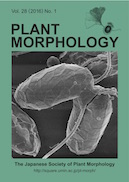Volume 28, Issue 1
Displaying 1-12 of 12 articles from this issue
- |<
- <
- 1
- >
- >|
Cover
-
2016Volume 28Issue 1 Pages 0
Published: 2016
Released on J-STAGE: April 14, 2017
Download PDF (2313K)
-
2016Volume 28Issue 1 Pages 1-2
Published: 2016
Released on J-STAGE: April 14, 2017
Download PDF (2759K) -
2016Volume 28Issue 1 Pages 3-7
Published: 2016
Released on J-STAGE: April 14, 2017
Download PDF (4407K) -
2016Volume 28Issue 1 Pages 9-13
Published: 2016
Released on J-STAGE: April 14, 2017
Download PDF (4023K) -
2016Volume 28Issue 1 Pages 15-21
Published: 2016
Released on J-STAGE: April 14, 2017
Download PDF (4485K) -
2016Volume 28Issue 1 Pages 23-27
Published: 2016
Released on J-STAGE: April 14, 2017
Download PDF (4264K) -
2016Volume 28Issue 1 Pages 29-34
Published: 2016
Released on J-STAGE: April 14, 2017
Download PDF (5401K)
-
2016Volume 28Issue 1 Pages 35-42
Published: 2016
Released on J-STAGE: April 14, 2017
Download PDF (6080K) -
2016Volume 28Issue 1 Pages 43-47
Published: 2016
Released on J-STAGE: April 14, 2017
Download PDF (6728K) -
2016Volume 28Issue 1 Pages 49-54
Published: 2016
Released on J-STAGE: April 14, 2017
Download PDF (5861K)
Brief note
-
2016Volume 28Issue 1 Pages 55-57
Published: 2016
Released on J-STAGE: April 14, 2017
Download PDF (2617K)
Poster Abstract
-
2016Volume 28Issue 1 Pages 59-
Published: 2016
Released on J-STAGE: April 14, 2017
Download PDF (2670K)
- |<
- <
- 1
- >
- >|
